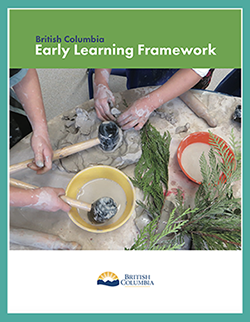Module 5: Living Inquiries – Communication and Literacies
Vocabulary, Symbols, and Written Language
Children can engage with verbal, symbolic, and written languages that are meaningful to them and their community.
Critically Reflective Questions
- How can children learn about a diversity of languages?
- For example, sign language, local Indigenous languages, and other languages used in the child’s community
- How could I extend these interactions?
- In what ways do I welcome the use of languages other than English in the child’s environment?
- For example, by encouraging bilingual children to use both languages or by singing songs in other languages
- Consider symbolic representation; that is, making marks that have meaning.
- How could I explore these ideas with children?
- In what ways could children experiment with numbers, measurement, and form in meaningful contexts?
- How is written language made part of the rhythm of the program?
Case Study: Vocabulary, symbols, and written language
At Beecher Creek, the children spent lots of time in the forested area nearby. They explored, hiked, and played in the forest. When they got back to the classroom, the children wrote about their own unique adventure, and drew pictures to illustrate what they experienced. The educator took pictures of the journals and drawings, and added them to her field notes describing the traces of practice in pedagogical narrations.
Reflective Question
In your practice, how might you encourage children to explore verbal or written language?
